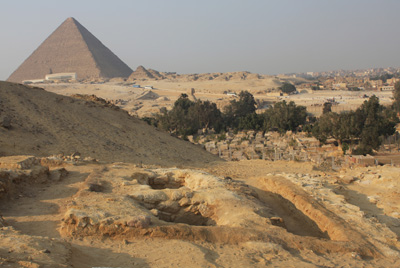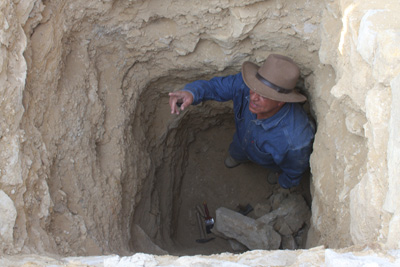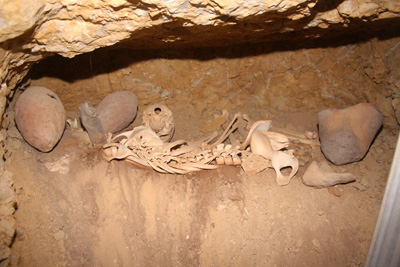 There is exciting news breaking right now in Egypt. An archaeological team led by Dr. Zahi Hawass has discovered several new tombs that belong to the workers who built the pyramids of Khufu and Khafre.
There is exciting news breaking right now in Egypt. An archaeological team led by Dr. Zahi Hawass has discovered several new tombs that belong to the workers who built the pyramids of Khufu and Khafre.
This is the first time to uncover tombs like the ones that were found during the 1990s, which belong to the late 4th and 5th Dynasties (2649-2374 BC), said Dr. Hawass in the press release.
When we think of Giza we tend to think of the Giza Pyramids. However, while the pyramids were under construction, there was an extensive city to the south that supported the workers. It included houses, bakeries, magazines and a hypostyle hall (See the video below, in which Mark Lehner descibes his work researching this area).
This system of support for the workers also included burials for those who died at Giza. These tombs were built beside the kings pyramid, which indicates that these people were not by any means slaves. If they were slaves, they would not have been able to build their tombs beside their kings, said Dr. Hawass.
 The idea of theGiza Pyramidsbeing built by slaves is a myth it has never had any basis in archaeological fact.
The idea of theGiza Pyramidsbeing built by slaves is a myth it has never had any basis in archaeological fact.
One of tombs uncovered belongs to a man named Idu. The release says that it is a rectangular structure with a mud brick outside casing that is covered with plaster. It has several burial shafts, each cased with white limestone there are niches in front of each shaft.
Thepress releaseparaphrases Adel Okasha, the supervisor of the excavation, as saying that the upper part of the tomb had a vaulted shape which symbolizes, the eternal hill from which the human creation began, according to the Memphis religious tradition. This is strong evidence that the tomb dates to the early 4th dynasty. This shape is also similar to those of tombs located beside Snefrus pyramid in Dahshur.
More tombs, containing coffins, were found to the west of Idus resting place. Another tombhas beenfound to the south that is built of mud brick and has several burial shafts each of which contains a skeleton and pottery sherds.
21 Buffalo and 23 Sheep a Day
One statement in the release that really caught my eye, is that evidence uncovered also revealed that the families in the Delta and Upper Egypt sent 21 buffalo and 23 sheep to the plateau every day to feed the workers.
 It isobviously no surprise that people would send food on a regular basis.It’s alsono surprisethat the foodwould be rich in protein -sincethat’s somethingthat you needif youre going to be doing heavy manual labour.
It isobviously no surprise that people would send food on a regular basis.It’s alsono surprisethat the foodwould be rich in protein -sincethat’s somethingthat you needif youre going to be doing heavy manual labour.
What does surprise me is the detail provided in the release. Im curious to know how Egyptologists were able to work this out so exactly.
Have there been written records found that provide such precise detail? Do we also have detailed info on the rations for grain and vegetables? If so can we tell if this diet ever changed?
This is very fascinating stuff as the diet of the workers would be important for a project like this. After all, you cant build the pyramids with a severely malnourished workforce!
Im going to finish up with another quote from the release. Hawass pointed out that the families who sent these were not paying their taxes to the Egyptian government, but rather they were sharing in one of Egypts national projects.
Video: Mark Lehner’s Search for the Pyramid Builders of Ancient Egypt